 |
 |
 |
| |
Islatravir Safety Through 48 Weeks With Doravirine in Phase 2 Trial
|
| |
| |
AIDS 2020: 23rd International AIDS Conference Virtual, July 6-10, 2020
Mark Mascolini
Through 48 weeks of a phase 2 dose-ranging study, the novel antiretroviral islatravir had a good safety profile when combined with the nonnucleoside doravirine [1]. The two-drug regimen had modest effects on metabolic variables and body weight.
Islatravir inhibits HIV reverse transcription via two mechanisms—translocation inhibition (which stops the reverse transcriptase nucleotide binding site from opening) and delayed chain termination (which prevents nucleotide incorporation into viral DNA). This one-two punch against HIV may contribute to the high potency of islatravir against drug-resistant virus and its high barrier to resistance. A phase 2 study also presented at AIDS 2020 found a low rate of virologic failure with islatravir plus doravirine through 48 weeks [2]. Researchers analyzed islatravir/doravirine safety in the same phase 2 trial.
Study P011 enrolled antiretroviral-naive adults and randomized them to doravirine plus islatravir (at 0.25, 0.75, or 2.25 mg once daily) or to a control regimen of doravirine plus lamivudine and tenofovir disoproxil fumarate (3TC/TDF). Participants randomized to islatravir/doravirine also took 3TC for 24 weeks then dropped 3TC if they reached a viral load below 50 copies.
Each of the four study arms had about 30 participants. In the 0.25-, 0.75, and 2.25-mg islatravir groups, numbers of drug-related adverse events through week 48 were 0, 3, and 4, compared with 6 in the control arm (7.8% for combined islatravir arms versus 19.4% in the control arm). Numbers of 48-week serious adverse events in the 0.25-, 0.75, and 2.25-mg islatravir groups were 1, 2, and 0, compared with 2 in the control arm (3.3% combined islatravir arms versus 6.5% control arm). Two people taking 2.25 mg of islatravir plus doravirine stopped treatment because of an adverse event, as did 1 in the control arm (2.2% combined islatravir arms versus 3.2% control arm).
The most frequent adverse events across all four treatment groups were headache (11.1% in combined islatravir arms, 6.5% in control arm), nausea (8.9% combined islatravir arms, 9.7% control arm), and diarrhea (6.7% combined islatravir arms, 16.1% control arm). Most cases of diarrhea were mild, transient, and judged not related to study treatment. The same can be said for headache. Arthralgia occurred in 1 person taking 0.25-mg islatravir, 2 taking 0.75-mg islatravir, 4 taking 2.25-mg islatravir, and 1 taking the control regimen (7.8% combined islatravir arms, 3.2% control arm).
The most frequent lab abnormality through 48 weeks was elevated creatine kinase (grade 4, 5.6% in combined islatravir arms, 3.2% in control arm), which was linked to physical exertion in 9 of 10 cases, all of which resolved. Over 48 weeks rates of grade 3 triglyceride elevations were 2.6% in the combined islatravir arms and 0 in the control arm. Respective rates of 48-week grade 3 abnormal alanine aminotransferase were 3.3% and 3.2%. Through 48 weeks total-to-HDL cholesterol ratio measured -0.26 in the combined islatravir arms and -0.31 in the control arm. Glucose rose an average 2.3 mg/dL in the combined islatravir arms while falling 2.0 mg/dL in the control arm.
Through 48 weeks, 34 of 90 people (37.8%) in the combined islatravir arms and 7 of 31 (22.6%) in the control arm had more than a 5% weight gain. Most of the weight gain came in the first 24 weeks and so, the researchers suggested, may reflect the return-to-health effect of initial antiretroviral therapy.
The researchers concluded that “islatravir was well tolerated regardless of dose through 48 weeks of treatment, with fewer drug-related adverse events than doravirine/3TC/TDF.” Ongoing phase 2 and 3 trials of islatravir/doravirine use the 0.75-mg dose of islatravir.
References
1. DeJesus E, Molina JM, Yazdanpanah Y, et al. Islatravir safety analysis through week 48 from a phase 2 trial in treatment naive adults with HIV-1 infection. AIDS 2020: 23rd International AIDS Conference Virtual. July 6-10, 2020. Abstract OAB0305.
2. Orkin C, Molina JM, Yazdanpanah Y, et al. Analysis of protocol defined virologic failure through week 48 from a phase 2 trial (P011) of islatravir and doravirine in treatment-naive adults with HIV-1 infection. AIDS 2020: 23rd International AIDS Conference Virtual. July 6-10, 2020. Abstract OAB0302.
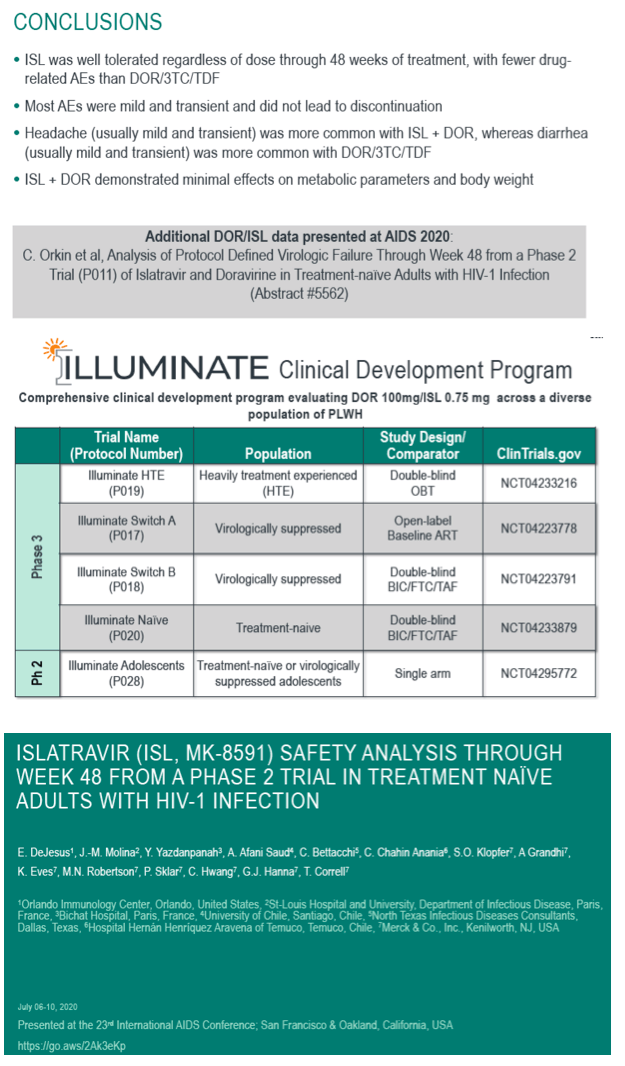
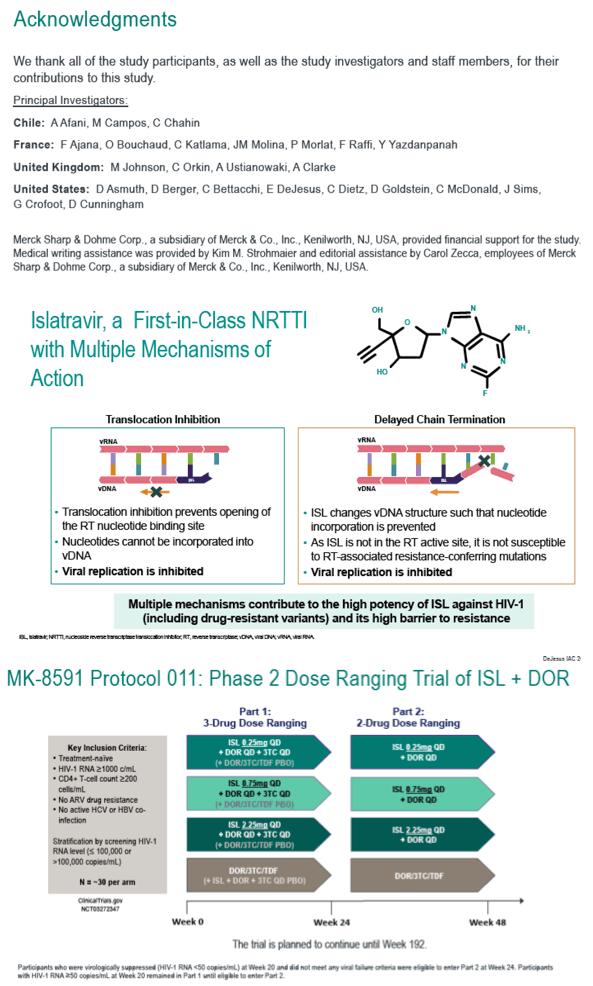
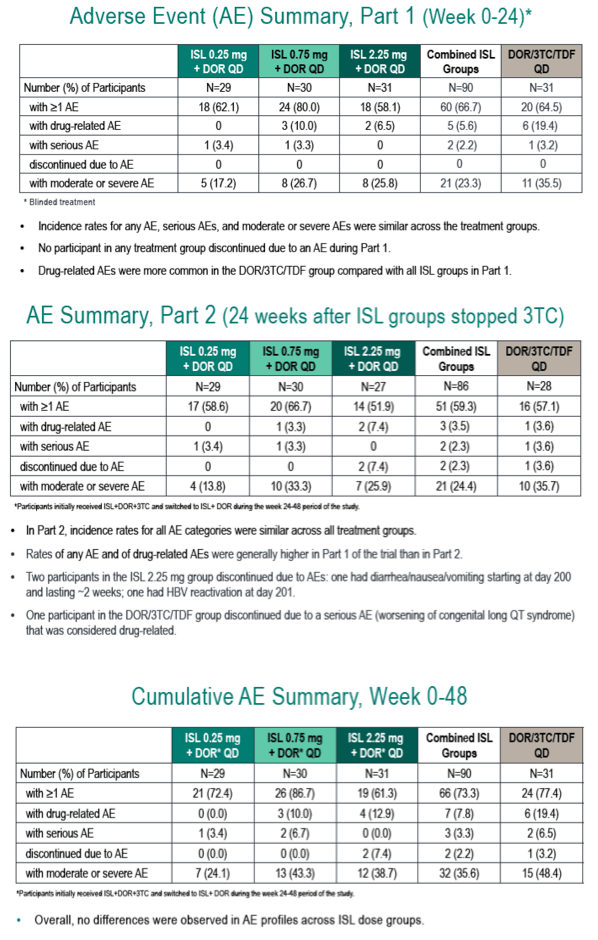
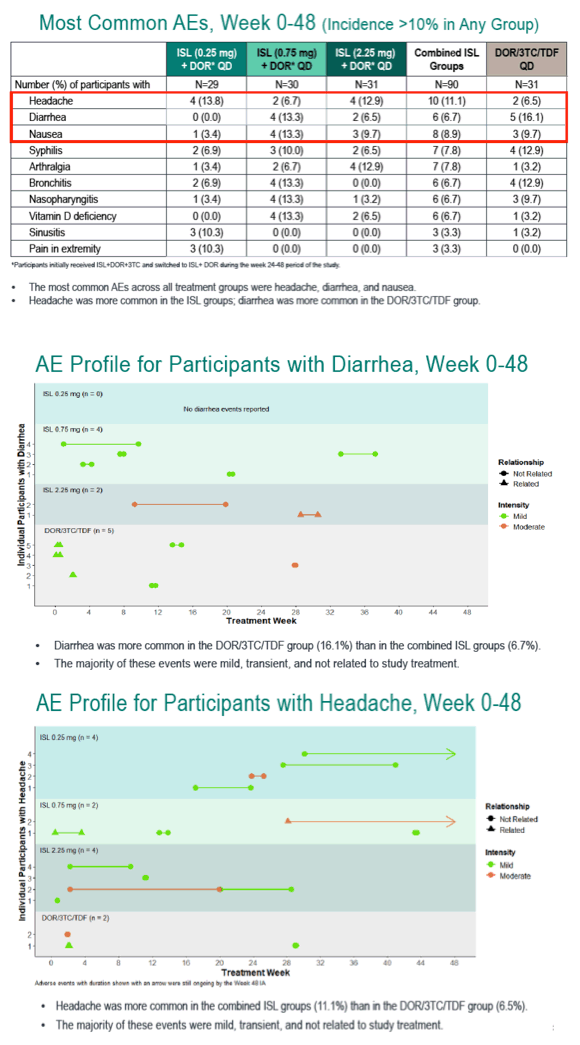
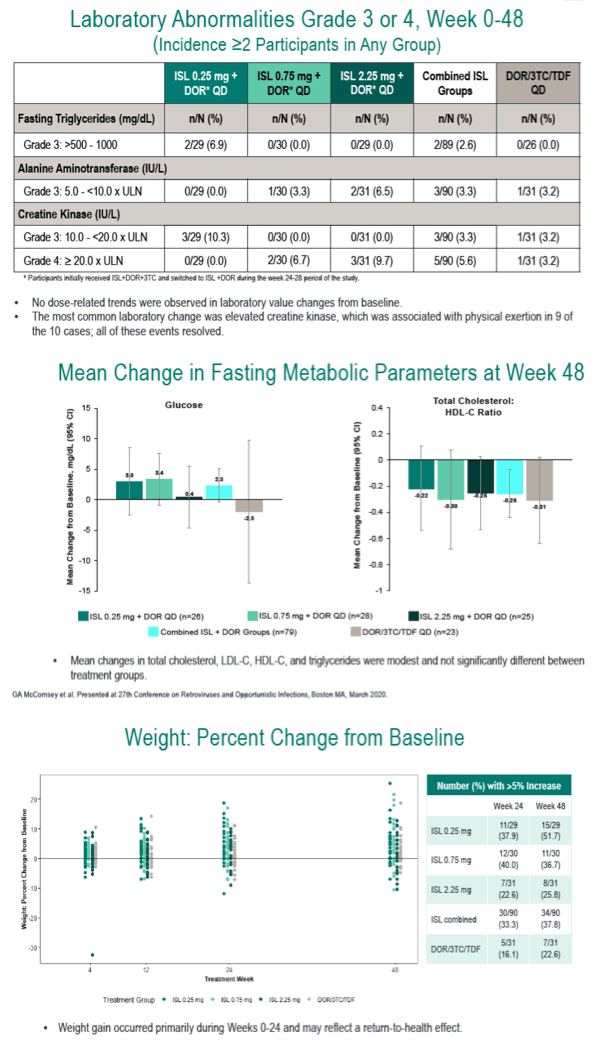
|
| |
|
 |
 |
|
|